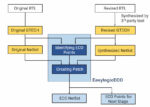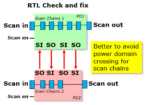You are currently viewing SemiWiki as a guest which gives you limited access to the site. To view blog comments and experience other SemiWiki features you must be a registered member. Registration is fast, simple, and absolutely free so please,
join our community today!
Rising semiconductor complexity—driven by multi-die architectures, the move towards more advanced technology nodes, and more stringent reliability targets, is dramatically increasing the volume of verification required to achieve DFT verification sign-off.
Come learn how the Questa One DFT Verification solution, combined
…
Read More
I first visited Easy-Logic at DAC in 2023, so it was time to meet them again at #61DAC in San Francisco to find out what’s new this year. Steven Chen, VP Sales for North America and Asia met with me in their booth for an update briefing. Steven has been with Easy-Logic for six years now and earned an MBA from Baruch College in New York. This… Read More
My recent article, ‘Chip War without Soldiers’ explained the importance of upskilling and preparing the chip design workforce in this current scenario, and it also explained how it will lead to ‘Fabs without Chips’ if we don’t prioritize it. VLSI Engineers are the pillars of the semiconductor industry, and they can only transform… Read More
The annual ITC event was held the last week of September, and I kept reading all of the news highlights from the EDA vendors, as the time spent on the tester can be a major cost and the value to catching defective chips from reaching production is so critical. Chiplets, 2.5D and 3D IC design have caught the attention of the test world, … Read More
Sivakumar P R is the Founder and CEO of Maven Silicon. He is responsible for the company’s vision, overall strategy, business, and technology. He is also the Founder and CEO of Aceic Design Technologies.
Sivakumar is a seasoned engineering professional who has worked in various fields, including electrical engineering,… Read More
Product Lifecycle Management (PLM) for electronic systems has moved from a passive ‘fire and forget’ approach to one that is intimately involved not only during design, but also throughout the entire life of every unit delivered to the field. Siemens EDA has a white paper titled “Tessent Silicon Lifecycle Solutions” that talks… Read More
Automotive electronic content has been growing at an accelerating pace, along with a shift from infotainment toward mission critical functions such as traction control, safety systems, engine control, autonomous driving, etc. The ISO 26262 automotive electronics safety standard evolved to help ensure that these systems… Read More
Design for test (DFT) requires a lot of up-front planning that can be difficult to alter if testing needs or performance differ from initial expectations. Hierarchical methodologies help in many ways including making it easier to reduce on chip resources such as the number of test signals. Also, hierarchical test allows for speed-ups… Read More
In the early days of Atrenta I met with Ralph Marlett, a distinguished test expert with many years of experience at Zuken and Recal Redac. He talked me into believing we could do meaningful static analysis for DFT-friendliness at RTL. His work with us really opened my eyes to the challenges that test groups face in integrating their… Read More
One of the most significant and oft repeated trends in EDA is the use of information from layout to help drive other parts of the design flow. This has happened with simulation and synthesis among other things. Of course, we think of test as a physical operation, but test pattern generation and sorting have been netlist based operations.… Read More








